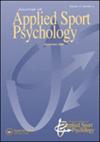Sport injury psychology: An overview and introduction to the special issue
IF 2.7
2区 心理学
Q2 HOSPITALITY, LEISURE, SPORT & TOURISM
引用次数: 0
Abstract
Welcome to this special issue of the Journal of Applied Sport Psychology on Sports Injury Psychology. We introduce this special issue in the knowledge that just over 20 years ago, Britton Brewer was tasked with a similar introduction to write as Guest Editor of the 1998 special issue (Brewer, 1998). At that point in time, Brewer remarked that a special issue was timely given the expanding research interest in sports injury psychology and broadening of the domain to include topics, such as adherence to rehabilitation and interventions to prevent injury. Despite growing interest in the psychology of injury, Brewer highlighted the need for further research, suggesting “there is obviously a great deal more to be learned about the role of psychological factors in the occurrence of and recovery from sports injuries” (p. 2). The previous special edition, therefore, acted as a call to action, challenging researchers to traverse the sports injury landscape, building upon existing knowledge. Nearly 25 years later this special edition opens up a timely question asked by many a traveler, “are we there yet?” As ever, the answer to this question is complex and it would be naïve to provide a simple answer. Yet, with this in mind, we propose that it is both timely and important to engage in critical dialogue. We suggest this because sports injury psychology is an area of research that has continued to flourish and diversify in the applied sports psychology literature. Following the publication of the 1998 special edition, 23 articles with injury in the title have been published in the Journal of Applied Sport Psychology alone. These articles have continued to expand our understanding of the emotional responses to injury (e.g., Tracey, 2003), and provided new approaches to working with injured athletes, such as mindfulness (Ivarsson et al., 2015) and gratitude (Salim & Wadey, 2021) and have considered how injury impacts and is impacted by a broad range of individuals, such as coaches (Podlog & Eklund, 2007), parents (Podlog et al., 2012), and teams (Surya et al., 2015). Thus the volume and breadth of sports injury research have certainly increased, but alongside this, we might question whether this research is also driven in diverse theoretical and methodological directions. Furthermore, there is no doubt that this flourishing research area has developed new knowledge, but is this knowledge enough to enhance the work we (as psychologists, physiotherapists, coaches, and other supporters) do with injured athletes? Our aim in this special issue is to present five articles, each of which challenges our current thinking on sports injury psychology in a different way. We open the special issue with运动损伤心理学:特刊综述与简介
欢迎来到本期《应用运动心理学杂志》关于运动损伤心理学的特刊。我们介绍这一期特刊的知识,就在20多年前,布里顿布鲁尔被要求写一个类似的介绍,作为1998年特刊的客座编辑(布鲁尔,1998年)。在那个时间点上,Brewer指出,鉴于运动损伤心理学研究兴趣的扩大和领域的扩大,包括诸如坚持康复和预防损伤干预等主题,一个特别的问题是及时的。尽管人们对损伤心理学的兴趣越来越大,但Brewer强调了进一步研究的必要性,他认为“关于心理因素在运动损伤发生和恢复中的作用,显然还有很多东西需要学习”(第2页)。因此,之前的特别版作为一种行动呼吁,挑战研究人员在现有知识的基础上,探索运动损伤领域。将近25年过去了,这本特别版的书及时地提出了一个许多旅行者都会问的问题:“我们到了吗?”和以往一样,这个问题的答案是复杂的,提供一个简单的答案是naïve。然而,考虑到这一点,我们建议进行批判性对话既及时又重要。我们建议这样做是因为运动损伤心理学是一个研究领域,在应用运动心理学文献中持续蓬勃发展和多样化。自1998年特别版出版以来,仅在《应用运动心理学杂志》上就发表了23篇标题为“受伤”的文章。这些文章继续扩展了我们对受伤情绪反应的理解(例如,Tracey, 2003),并提供了与受伤运动员合作的新方法,例如正念(Ivarsson等人,2015)和感恩(Salim和Wadey, 2021),并考虑了受伤如何影响和受到广泛个体的影响,例如教练(Podlog和Eklund, 2007),父母(Podlog等人,2012)和团队(Surya等人,2015)。因此,运动损伤研究的数量和广度当然增加了,但与此同时,我们可能会质疑这项研究是否也在不同的理论和方法方向上受到推动。此外,毫无疑问,这个蓬勃发展的研究领域已经发展出了新的知识,但是这些知识是否足以加强我们(作为心理学家、物理治疗师、教练和其他支持者)对受伤运动员的工作?我们在本期特刊的目的是呈现五篇文章,每一篇文章都以不同的方式挑战我们目前对运动损伤心理学的思考。我们的特刊以
本文章由计算机程序翻译,如有差异,请以英文原文为准。
求助全文
约1分钟内获得全文
求助全文
来源期刊
CiteScore
6.90
自引率
9.40%
发文量
39
审稿时长
>12 weeks
期刊介绍:
The Journal of Applied Sport Psychology (JASP) is a refereed journal designed to significantly advance thought, theory, and research on applied aspects of sport and exercise psychology. Submissions such as experimental studies, qualitative research, correlational studies, case studies, position papers, critical reviews, theoretical developments specific to applied research conducted in sport and/or exercise settings, or having significant applied implications to sport and exercise, are appropriate content for the JASP. Please see the recent Editorial for further details on the aims and scope of the journal. JASP is a non-proprietary journal that is an official publication of the Association for Applied Sport Psychology (AASP). The purpose of AASP is to promote the development of psychological theory, research, and intervention strategies in sport and exercise psychology. The Journal is a direct benefit of membership in AASP and is received by its student and professional members. The publisher of the JASP is Taylor and Francis, Inc. of Philadelphia, PA.

 求助内容:
求助内容: 应助结果提醒方式:
应助结果提醒方式:


